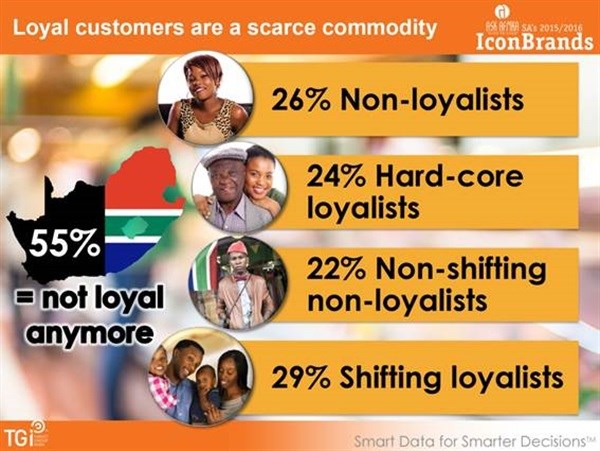
Top stories






More news











When selecting products consumers behave in different ways, some tend to be more loyal to a particular brand and others more open to experimentation. The research showed that there is a general upward trend for people agreeing that they like to try new things.
Over time, consumers have been asking different things from brands. In the '70s they wanted quality and functionality, in the '90s brand and price were paramount, in the beginning of the century brand loyalty was all about service information and delivery, now consumers are loyal to brands that not only get all these factors right, but also provide a satisfying emotional brand experience.

"We need to consider the emotional link that consumers are after. Neuro-marketers and scientists have proved that if we are emotionally engaged in advertising content, this engagement looks fairly similar to our engagement with programme content," says Sarina de Beer, MD of Ask Afrika.
Despite the overall trends and loyal customers becoming a scarce commodity, consumers can be grouped into segments of loyalty types and each group can be targeted in a different way through marketing campaigns. With loyalty declining, brands need to understand what is contributing to the decline in order to manage consumer commitment. Segmentation sheds light on the different segments, how they are different, how their behaviour and attitudes are changing to enable brands to come up with current strategies that will elevate their relevance and consumer commitment.
1. Non-loyalists are natural experimenters, they are creative and tend to have a Utopian outlook on life. They seek out quality and are influenced by advertising. They are typically the main shopper in a household, they like to try new brands and are early adopters when new products are launched in the market. Non-loyalists are typically employed females between the ages of 15 and 34.
2. Hard-core loyalists are creatures of habit and are often under economic pressure. They are price focussed and availability plays a large role in product choice. They have a personal link to brands and stick with what they know. They are mostly not the main shopper in the household and shop based on previous experience. The Hardcore loyalist demographic is often made up of dependents, over 65 or youngsters and they are either unemployed or employed part-time.
3. Non-shifting non-loyalists sit on the fence. They probably don't give a great deal of thought or energy to shopping and are more likely not to be the main shopper in a household. They often come from small households or if they are the main shopper are often living on their own. They have a low income and are mostly unemployed and 15 to 24 or over 65.
4. Shifting loyalists are more likely to stick with the brand that they know, but they are also keen to try new products. They are also more likely to be the main shopper in a household. They are less likely to be influenced by advertising than Non-loyalists, but it can still have an impact. This group need a reason to try something new.